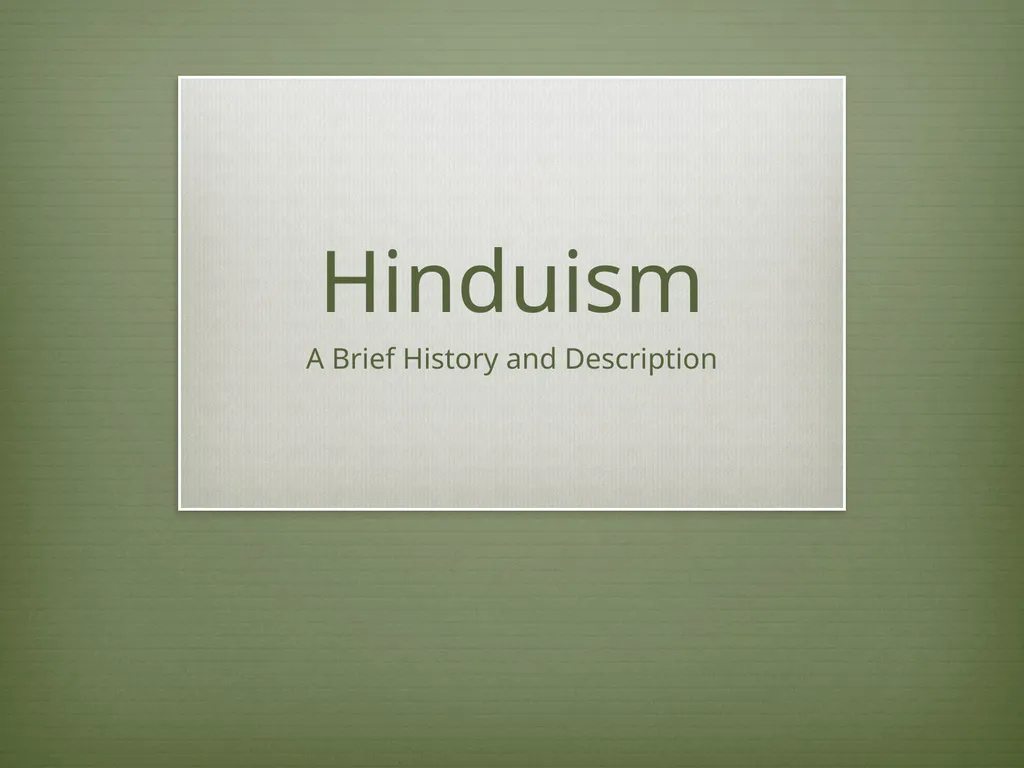
Author : mitsue-stanley | Published Date : 2025-05-10
Description: Hinduism A Brief History and Description What are some things that set Hinduism apart for the religions we have studied so far? No identifiable founder(s) No strong organizational structure or centralized authority. No set creed or unifiedDownload Presentation The PPT/PDF document "" is the property of its rightful owner. Permission is granted to download and print the materials on this website for personal, non-commercial use only, and to display it on your personal computer provided you do not modify the materials and that you retain all copyright notices contained in the materials. By downloading content from our website, you accept the terms of this agreement.
Here is the link to download the presentation.
"Hinduism A Brief History and Description What are"The content belongs to its owner. You may download and print it for personal use, without modification, and keep all copyright notices. By downloading, you agree to these terms.













